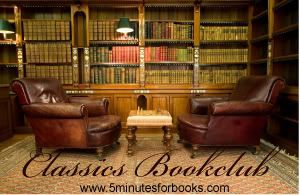 I first read A Girl Named Zippy a couple of years ago when I was browsing the biography section of the library and was captured by the baby picture and sub-title: "Growing up Small in Moreland, Indiana." Within a few chapters, I was hooked and finished the book in just a few days. The same happened when I read the sequel She Got Up Off the Couch: And Other Heroic Acts from Mooreland, Indiana. And the same thing happened again when I reread Zippy this week. They are both funny, poignant, and painfully honest accounts of one family's joys and trials from a remarkably well-written child's perspective.
I first read A Girl Named Zippy a couple of years ago when I was browsing the biography section of the library and was captured by the baby picture and sub-title: "Growing up Small in Moreland, Indiana." Within a few chapters, I was hooked and finished the book in just a few days. The same happened when I read the sequel She Got Up Off the Couch: And Other Heroic Acts from Mooreland, Indiana. And the same thing happened again when I reread Zippy this week. They are both funny, poignant, and painfully honest accounts of one family's joys and trials from a remarkably well-written child's perspective.In reviewing She Got Up Off the Couch for my bookclub where I used to live, I wrote of Zippy:
Since I love subtle word-plays like Mary Engelbreit's "Life is just a chair of bowlies," anyone who spoke of "Growing up Small" must have a unique perspective on the world. I certainly wasn't disappointed, as this childhood memoir delivers Midwestern charm and humor by a pint-size agnostic with a knack for trouble and accidents. It had me laughing to the point of tears on several occasions. Being a country girl from the Midwest myself, I could certainly identify with elements of her story.
I must clarify that my childhood was not nearly so adventurous as Zippys's, but I never would have imagined two years ago that I would be living in Indiana myself! I'm not sure there is anything specifically Indianian (or Hoosier, to be more correct) about Haven Kimmel's childhood. It is probably pretty typical for any small American town in the 70's. Even though there are a few hints of darker fears and dangers, it was a pretty innocent childhood full of dirt and friends and scrapes and animals. I wouldn't, couldn't raise my children in the laissez faire manner her parents seemed to adopt, but I do wonder if parents inherently worried less about their children 40 years ago. Was there that much less to be concerned about, or was it simply less public and prominent than today?
At any rate, A Girl Named Zippy is a quick, fun read that I highly recommend for responsible teens and adults (I wouldn't want my kids to get any ideas or attitudes until they were discerning enough to sift the funny from the rebellious).
Unfortunately, I'm unable to provide you with a sample of the humor and wit as I had to return the book to the library (probably for another bookclub member who had placed a hold). I'm looking forward to discussing this with my new bookclub in Indiana (but not Mooreland, IN).










